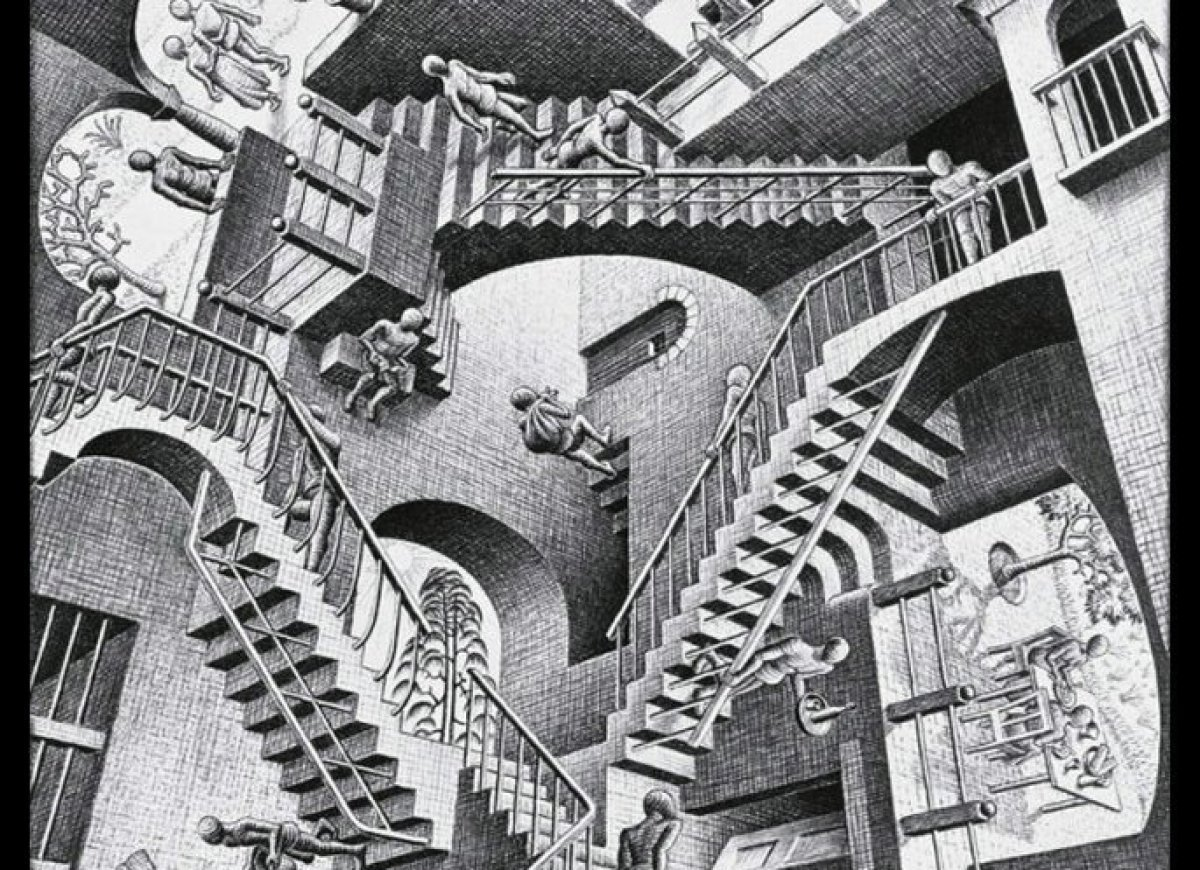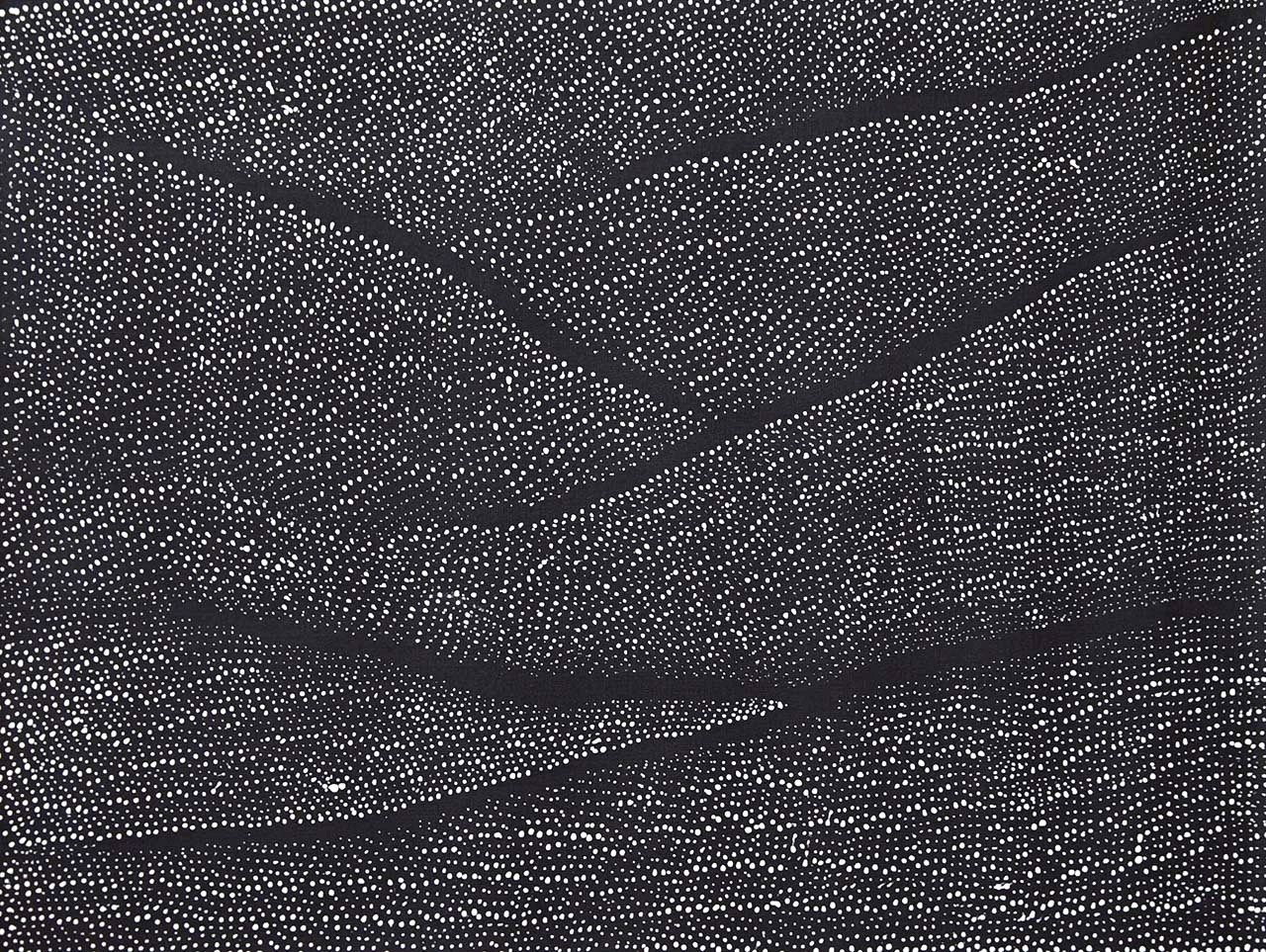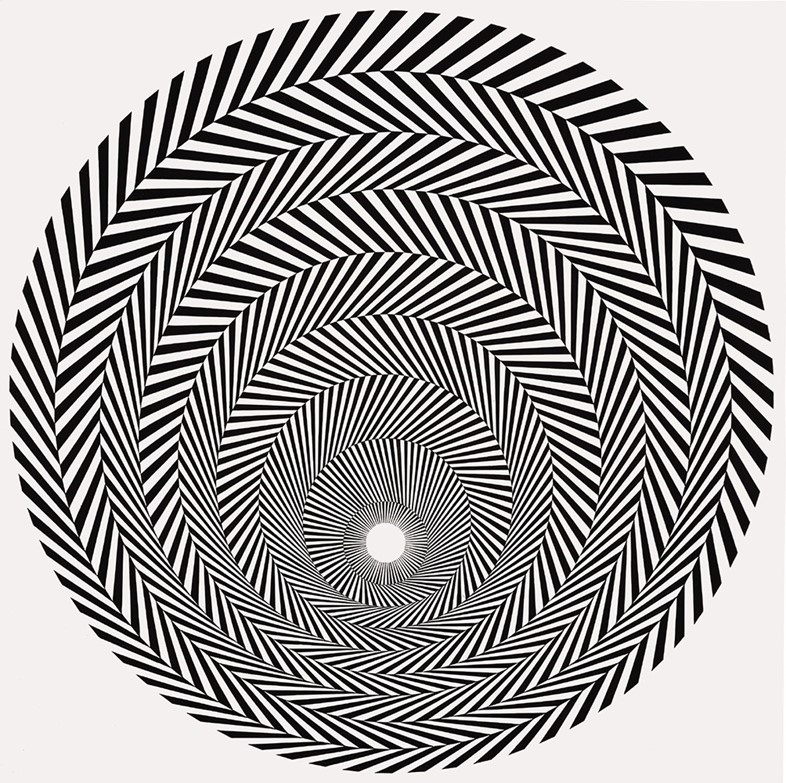Welcome to Lines and Dots.
This resource booklet contains a unit of work that meets the Visual Arts Australian Curriculum for the band years five and six. The unit of work focuses on Optical Illusions or Op Art.
Op Art creates optical illusions that fool the eyes in various ways. Generally, it uses repetition of some of the elements of art to create patterns that make illusions. During this unit of work, students will learn to use lines, shapes, and colours to create form and space. They will learn about the line types for mood or to imply a shape. They will know the different kinds of shapes and how geometric shapes generally work best in Op Art. Using colour theory, they pick colours for intent. They use techniques to create form and shape, which gives the illusions that confuse the eye.

Escher, M. C. "Convex and Concave." Lithograph. 1955
This unit of work will explore visual arts from a variety of cultures and periods. Students will get the opportunity to learn how to appraise Art as an audience member and as an artist. This resource encourages school connections with local Indigenous Organisations and/or Artists, so students can immerse themselves within Aboriginal and Torres Strait Islander Art. Students will explore Arts through Mathematics and technology. They will learn how art themes develop over time.

Lily Kelly Napangardi
How to Use The Teachers Guide Resource:
·Lesson Plans for the unit are contained in the book, including activities and some resources.
·If you use a Smartboard (with your teaching/learning strategies), there are slides, resources, and activities to cut and paste to your Smartboard program.
Lines and Dots Teacher Resource
One of the activities in the resource book uses PowerPoint - Download Lesson Six & Seven Resources to save time for your activity
Student eBook:
·There is an accompanying student eBook that reflects the learning intent of this resource book. The teacher can use the ebook on devices or print out individual sheets.

Blaze 1, 1962, Bridget Riley
We hope you find this resource easy to use and engages your students in the learning of visual art. If you have any feedback, please don’t hesitate to send an email to kate.doust@cqumail.com